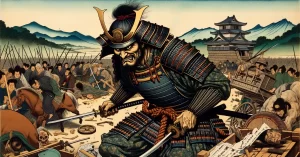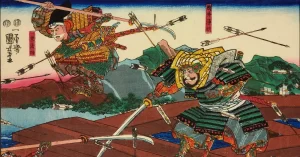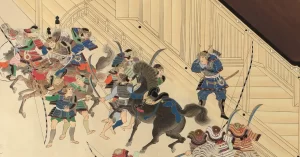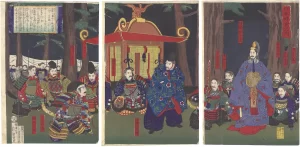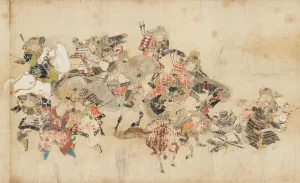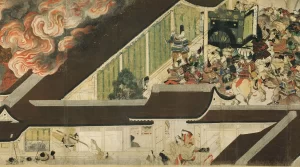The Kenmu Restoration, a significant yet brief period in Japanese history from 1333 to 1336, marked an attempt by Emperor Go-Daigo to restore imperial rule following the decline of the Kamakura Shogunate. Initiated against a backdrop of political instability and warrior class discontent, Go-Daigo’s ambitious plan aimed at centralizing power and reducing military influence. It culminated in the Genkō War and the fall of the Kamakura Shogunate. However, his failure to balance the interests of the samurai and court nobles, coupled with strategic and military missteps, led to his downfall. Ashikaga Takauji, initially an ally, rebelled against Go-Daigo, decisively defeating his forces in the Battle of Minato River and establishing the Ashikaga Shogunate. This marked the end of the Kenmu Restoration and ushered in the Muromachi period of Japanese history.
